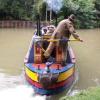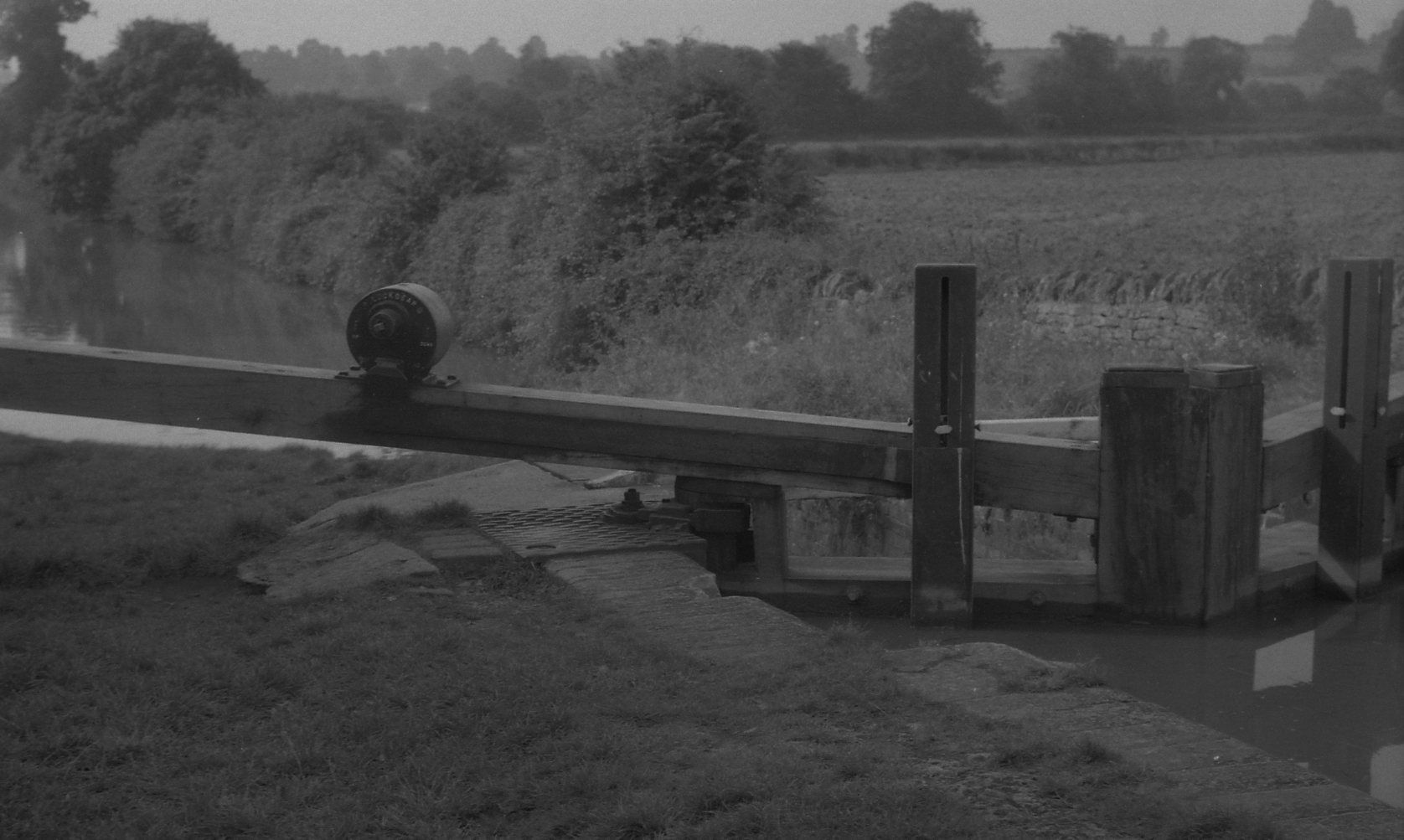-
Posts
37,913 -
Joined
-
Last visited
-
Days Won
81
Content Type
Profiles
Forums
Events
Gallery
Blogs
Store
Everything posted by alan_fincher
-
The 2 pot Sabbs are rather nice little units and their approximately 18-22 HP will push a well shaped boat along very well indeed. In the 1970s a boat named Japonica was particularly well known for it's turn of speed, and other boats struggled to keep up with it. I'm not sure why you would want to box it in and silence it though - these are definitely engines that need to heard - suppressing their excellent bark would be a great shame!
-

Finding the boat builder of an unknown boat
alan_fincher replied to Colin b's topic in New to Boating?
I didn't mean to sound disparaging! There are all kinds of boats out there and in my time I have owned one that had similar width ones to your new purchase, (this was in the 1970s). . However I can't immediately think of any boats with a recognised branding where this applies, so my gut feeling remains that is is a one off, and you are unlikely to find another one similar. -

Finding the boat builder of an unknown boat
alan_fincher replied to Colin b's topic in New to Boating?
It looks so eccentric that I feel it really could be a one off by someone in possession of welding equipment but minimal or no knowledge of good canal boat design. I've no idea what that bow design is meant to achieve. Does it actually have side decks on the gunwales that are wide enough to walk along safely? -
Some parts of the description are so garbled that I'm genuinely not sure exactly what they are trying to say...
-
Here is the URL for the actual ad for that ex Thomas Clayton wooden boat.... https://www.facebook.com/marketplace/item/746277510599431/
-
Yesterday we walked the stretch nearly at the end, embracing 3 different pounds. None of them looked overly weeded, so if there is a problem I am assuming it must be further up towards Gayton.
-
To be fair I don't think Electrolux /Dometic "non room sealed" fridge installation instructions have ever said they are suitable to be used in boats either. This has never stopped people installing them in their thousands. You are of course correct though - it would be helpful if OP states the age of their boat.
-
Broadly: no, there are no rules that prevent you from fitting a gas water heater to a boat currently without one. But is the boat your primary residence, or is it just used for occasional leisure purposes? This may affect who is allowed to do the fitting, but doesn't affect whether it can be fitted - it always can.
-
It's possible, particularly if a whole new bottom has been put on, as it suggests. I'd be rather surprised if it is no wider than that at any point, but Joshers have a lesser design width than the "Grand Unions" which are typically 7 feet or more.
-
Yes, you are quite correct of course.... I can see it now. I can see it now. EDITED TO ADD: The description is a bit odd, describing it as a "Working Boat", but of course you couldn't work it with the hold covered in by a steel cabin. This more of a "sailaway" - not even a lined sailaway. It needs huge amounts of work to turn it into a residential boat, or a boat for extensive cruising. A "JP" in a Josher is in my experience a rare occurrence, and a Josher with a three cylinder throb would not seem right to me. A JP2 would seem a better fit than a JP3 in my view.
-
Has this one been noted? Otter The description doesn't fit my memory of Otter that well, so i think it may have been subject to quite a lot of changes. EDIT: It appears to have acquired steelwork for an undercloth conversion, but both the pictutes of this appear to have horizontal cuts through it, and part way into the lightweight bracing. What's that all about then, or am I misreading it/
-
To be fair, at that location, it hardly likely to be unsettled by another boat going past at great speed!
-

Memories of what used to be a cracking event.
alan_fincher replied to alan_fincher's topic in General Boating
Or that King George VI would chose somewhere as small as Stoke Bruerne to make several "major" speeches! Also I'm doubtful that the French Resistance ever made it to that canal location. But all good fun, if not taken too seriously! -
We really miss the old annual Stoke Bruerne Village at War event. Always successful, it started to suffer from a declining number of people willing and able to organise and run the event. Younger volunteers began to move away, sometimes to various university course. Older volunteers continued to get older, and in some cases quite infirm. on the extreme end of things key players like David Blagrove passed away. I fear those were the good old days that we are unlikely to see the same of ever again. But let's salute it - sadly missed!
-
That is a lock that certainly looks better than back in the 1970s. Then it had just acquired gates with that awful hydraulic paddle gear; Everything I had heard until you posted this was that, irrespective of intended destination, broad/wide canal gates are manufactured at Stanley Ferry, whereas those for narrow canals are manufactured at Bradley on the BCN. So I'm kind of surprised if Stanley Ferry made this one.
-
Don't be tempted to push any wire, or similar, into the jet. They have a very fine mesh in them, and this will destroy it.
-
This post cannot be displayed because it is in a forum which requires at least 10 posts to view.
-
There are certainly buttys laying around under the ownership of people not actively restoring them, but trying to find someone who will buy them for restoration as buttys. In some cases these boats have been in limbo for several years. In another case one survives as a kit of parts in a large barn. On that basis, the bit of my text that you have highlighted I would suggest is actually true.
-
The problem, of course, being that these "reasonable people" may get hot under the collar about a butty not ending up as a butty, but very few of them (if any) will actually take on a butty, and carry on their travels with two boats. If you are Roger Farrington and end up in possession of the several buttys that have passed through his hands there is a much better living to be made by producing 2 motor boats from one butty than there simply is in renovating the butty and trying to sell it as such. I find it a shame when another butty is cut, but I really can't be angry t those doing it. There really are more butties around than people who actually want to take one on. Says he, who owns 2 Grand Union motors, but zero buttys.
-
Plenty of people actually put a bed space under the front deck on an historic narrow boa conversion. That said, it works better on a "Town" conversion than on a "Star" like HYDRUS. The deeper sides of a town gives around an extra 7" of internal height.
-
Yes, that makes complete sense, and, now you mention it, it's obvious. I wonder what the intended use, (if any) was for the short section of steelwork. There's barely 2 cupboard's worth - at least on our FLAMINGO there is a complete bedroom!
-
Am I imagining it, or wasn't it priced at about £105k when first brought to market? If so then just under £80K represents a hug reduction, but for what is still I believe an empty shell, still seems very over-priced. I am probably the last person who should pass comment on what is acceptable as cabin arrangements on a converted boat. FLAMINGO could be considered just as quirky as HYDRUS. Different things appeal to different owners, but I really don't get having a front section that simulates "clothed up", but not extending if forward over the whole hold space to have a deck board in the correct position.
-

Surveys and insurance requirements
alan_fincher replied to tehmarks's topic in Boat Building & Maintenance
Apparently he could not get good insurance at an acceptable price! 😀 -
As others have already stated, the food in the Barlow used to be top notch. Better still, when we dined there for 3 successive nights, and had exhausted all the "veggie" option on the menu, the then chef came and worked out with us a made on the spot special to avoid us duplicating a meal. It used to be very good indeed.
-
Yes, we were not able to get the boats there this year, but did make it up on Saturday by car. We didn't see many "Forumites" but did spend considerable time with cheshire~rose and Postcode, and also some time with Starcoaster. I think we must have jus missed RayT. Whilst boat numbers were less than in some previous years, it was good to see several boats I have not seen at any historic boat event before now. I particularly noted "Elstree" which my brother's boats used to be regularly coal boating with in the 1970s. As far as parading went the winding hole at the Barlow seemed to be unusually silted, making turning more "interesting" for some of the deepest draughted boats. It's a shame that the Barlow has abandoned serving meals, although the Pizza van on Saturday was excellent. Had we been moored there all weekend I think we would have missed the serving of breakfasts and other meals through the day. But, all in all, thank you to Malcolm for hosting this unique event.





